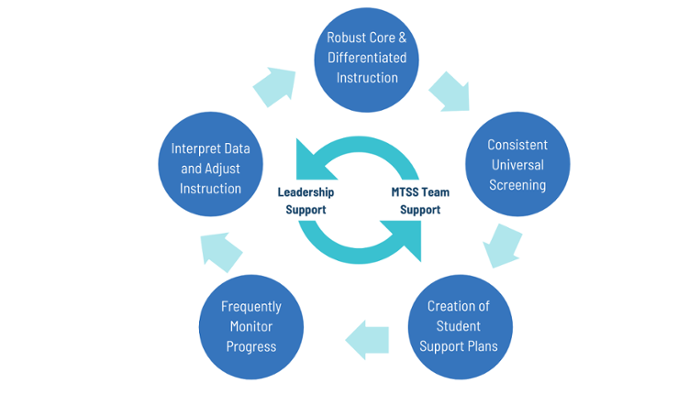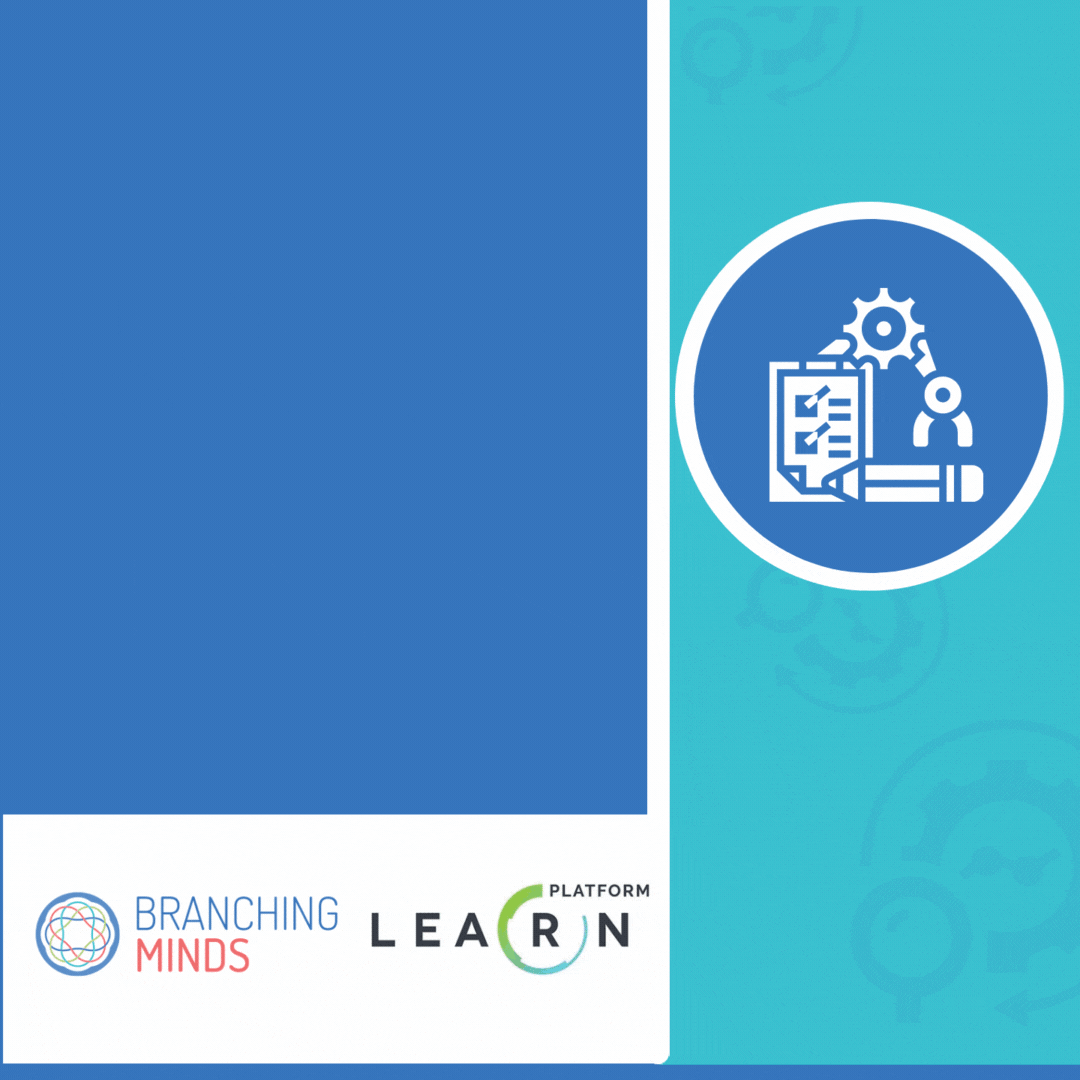Secondary teachers and leaders often cite difficulties and frustrations when they are asked about their current RTI/MTSS practice or implementation. My own experience with this work started when a district-level administrator walked into my office (about 2 seconds into my first year as a high school Asst. Principal) and dropped off a thick binder titled MTSS (that used to be titled RTI). Here you go. Run with this and see what you can do. MTSS? In high school? Why, how?
Some leaders don’t see the point of MTSS in secondary schools and think of it as a framework that belongs in elementary schools. Others understand the importance of implementing a strong practice, but when they take steps towards establishing the structures and procedures they meet many challenges and quickly get frustrated, which was my experience almost immediately.
Though implementing MTSS at the secondary level can present unique considerations and complications not present at the elementary level, it is a worthy endeavor that will inevitably lead to improved student outcomes, including decreased behavior incidents, improved student achievement, and increased student graduation rates.
MTSS at both the elementary and the secondary level is a proactive and preventative framework that grounds all decisions on data. The main components are the same for both:
- Core instruction should meet the needs of 80% of students.
- Valid and reliable universal screeners should be administered to all students; enabling professionals to identify those at risk and provide differentiation to diverse learners.
- Student support plans should be created based on data, key indicators of success and evidence-based strategies, programs and practices.
- Consistent problem-solving meetings should be scheduled to review progress monitoring of student data and make adjustments to the intervention plan.
- The work needs to be collaborative and aligned across all stakeholders.

MTSS Framework
Common Challenges Implementing MTSS at the Secondary Level and How to Overcome Them
- The challenge: Secondary school teachers see themselves as content experts and are not trained in teaching basic skills. Unlike elementary school teachers, secondary teachers become more specialized in their content areas. “I don’t teach Reading, though, I teach Chemistry.” How many times have you heard something similar from teachers? Bottom line is, though, that when students are missing basic math or literacy skills, they will not be successful in any content areas or courses. If a student has difficulty reading, that student will struggle in Chemistry and Government. Though teachers do not consider themselves reading teachers, they are not meeting their students’ needs unless they address these basic reading skills.
The solution: In the absence of trained interventionists, teachers should be provided with research-based programs and trained in strategies to help students with elementary grade performance levels. Some examples of programs or strategies are Read 180, Strategic Adolescent Reading Intervention, Click or Clunk?, and Reciprocal Teaching. The assumption that teachers will be able to provide adequate support simply because they are educators is just not accurate. An hour of tutoring can be a complete waste of time if the tutor is not using the right strategies. - The challenge: Secondary students are often not engaged in their growth and learning. Students should be empowered to monitor their growth and be active participants in their own learning. This can be especially difficult for students who have experienced years of failure. Schools should always work on providing a culture of student motivation, engagement, and participation.
The solution: One common best practice is to provide students with a goal and progress monitor tracker, and to ensure these trackers become a part of their daily routines(*). As a high school administrator, I would often approach students and ask them their goals. They would pull out their tracker and show me their progress. Do they know their goals for their end-of-course exams? Do they know what credits they are missing for graduation? Do they know what learning objectives they need to focus on? - The challenge: Secondary school scheduling is incredibly complex. To meet graduation requirements, students need to earn specific credits. Different states will often offer several graduation plan options, college and career readiness programs, and student electives. Balancing all of this makes scheduling a nightmare.
The solution: District and school leaders need to be flexible and creative when planning intervention times. Some districts use homeroom or WYN (what you need) periods, some pull students out of electives, and others ask students to come in before or after school. These decisions will vary greatly, and there are many factors to consider in each district, but ensuring students have intervention time in their schedules is critical. - The challenge: Students are often so far behind, that interventions can feel pointless. As a young teacher working with at-risk high school students, I was guilty of this. My students had such large gaps that I often felt powerless. If I felt this after working with my students for just one year, imagine how frustrated these students felt after experiencing these frustrations and failures for so many years.
The solution: In addition to providing academic interventions, it is critical that we provide teachers with the skills to address student motivation after failure, and that we work on developing a growth mindset for these students. Small successes are incredibly powerful and easily achievable if we make the time to provide the support these students need.
Related Resources:Intervention Planning in MTSS: How to Balance Best Practices and Feasibility
Top Used Supports for High School Students in 2020 |
The solutions needed to achieve effective MTSS at the secondary level will always vary as the factors that lead to success from campus to campus are complex and unique. However, having a strong implementation plan that considers these common challenges is a great place to start.
(*) C.A Farrington et. al., Teaching Adolescents to Become Learners. The Role of Noncognitive Factors in Shaping School Performance: A Critical Literature Review (Chicago: University of Chicago Consortium on Chicago School Research, 2012), 10.
Ready to build capacity for your educators, and deliver positive outcomes for all students?
Learn about the Branching Minds Infrastructure Coaching Series, that helps school and district leaders streamline and improve their RTI/MTSS practice at the systems-level, helping them to achieve consistent high-fidelity practice, build capacity for educators, and deliver positive outcomes for all students.
|
![[Guest Author] Katya Henderson-avatar](https://www.branchingminds.com/hs-fs/hubfs/Team/Katya%20(1)-2.jpeg?width=82&height=82&name=Katya%20(1)-2.jpeg)
About the author
[Guest Author] Katya Henderson

Your MTSS Transformation Starts Here
Enhance your MTSS process. Book a Branching Minds demo today.



















.png?width=716&height=522&name=Tech-Learning-Most-Influential-Edtech-Product-2025(preview).png)